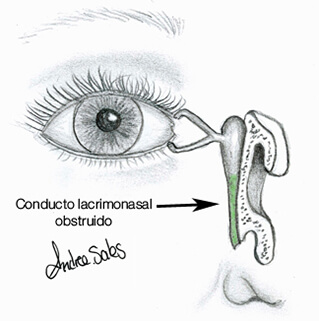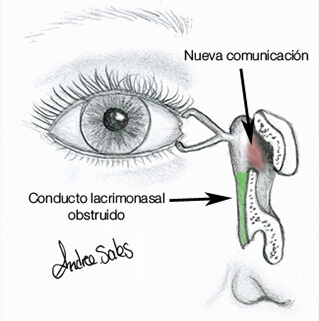Obstruction of the nasolacrimal duct (commonly called “Rija”) is a very frequent cause of tearing. In addition to tearing, it also often leads to recurrent conjunctivitis, as the lacrimal sac acts as a reservoir for bacteria. Sometimes the lacrimal sac can dilate and produce a lump on the inner canthus, which, if infected, causes a lot of pain and signs of infection in the area.
Treatment of nasolacrimal duct obstruction in adults is always surgery. There is no medical treatment that cures the obstruction. The aim of surgery is not to re-drain the obstructed duct, but to create a new drainage route from the lacrimal sac to the nose. This surgery is called Dacryocystorhinostomy (DCR). Dacryocystorhinostomy eliminates both tearing and recurrent conjunctivitis.
There are 3 ways to perform Dacryocystorhinostomy: external, endonasal or transcanalicular laser.



